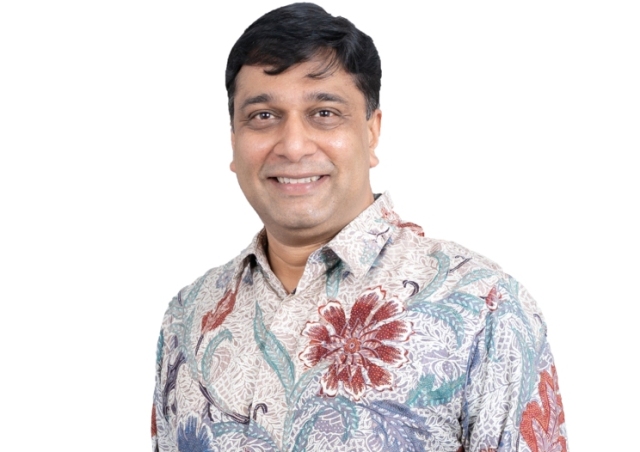Indosat Ooredoo COO Vikram Sinha has revealed the telecom operator’s network expansion plans in Indonesia.

Indosat Ooredoo has achieved strong growth in 2020, with revenue increasing by 6.9 percent to IDR 27.9 trillion and cellular revenue growing by 11.6 percent to IDR 23.1 trillion. EBITDA of Indosat Ooredoo rose 16 percent to IDR 11.4 trillion.
Indosat Ooredoo’s brand value increased by 31 percent in 2020, resulting in the company being named the 6th fastest growing telecoms brand globally by Brand Finance Telecoms earlier this year.
Recently, Indosat Ooredoo’s efforts to innovate and improve telecommunications services were also recognized at the 2021 Asia-Pacific Stevie Awards.
Indosat Ooredoo won four awards, highlighting our innovative management, COVID-19 corporate response, market-leading digital products and services, and commitment to network excellence.
Most notably, Indosat Ooredoo President Director and CEO, Ahmad Al-Neama, also clinched a Gold Stevie Award for Innovative Management in Technology Industries.
Indosat Ooredoo COO Vikram Sinha, in an interview with TelecomLead.com, revealed the growth and investment plans.
Indosat Ooredoo will continue investing in network infrastructure, while focusing on 4G/LTE and the Video Grade Network capable of providing improved internet services to customers.
What are the expected growth drivers in the next 2-3 years?
I foresee the transition to online lifestyles being a key driver of growth in the next 2-3 years. The COVID-19 pandemic has accelerated this transition to online communications, ways of working, learning and accessing entertainment, and so the demand for digital tools is here to stay.
 During the last 8-9 quarters, we have performed superbly with our current foundations. Thus, the 4G network will continue to serve as our main growth driver. We believe that the potential of the 4G network is still enormous, given that almost 30 percent of the Indonesian population are not connected to 4G yet.
During the last 8-9 quarters, we have performed superbly with our current foundations. Thus, the 4G network will continue to serve as our main growth driver. We believe that the potential of the 4G network is still enormous, given that almost 30 percent of the Indonesian population are not connected to 4G yet.
Our B2B will also play a highly important role, with the 5G use cases that will be performed and this will open new revenue streams.
At Indosat Ooredoo, we will continue to expand and strengthen our network to ensure that customers can access digital services and enjoy the full potential of the internet no matter where they are in Indonesia.
Who are Indosat’s main technology vendors and how do they help build the company?
Over the last 12 months, we have partnered with global digital players like Facebook, Snap, Cisco, Google, Nokia, Huawei and Ericsson to fast-track digitalisation of the customer experience and deliver network improvements to Indonesia.
To increase country-wide engagement and education, we partnered with Facebook to bring small unconnected villages online. We also recently announced an expanded partnership with Snap to accelerate the adoption of augmented reality (AR) in Indonesia. Multiple AR-focused programs, including webinars and competitions, will be launched over the next year to bridge the gap between the physical and digital worlds.
To boost the capabilities of our network, our partnerships with Cisco and Ericsson leverage the latest technologies to deliver energy- and cost-efficient solutions. For example, the launch of the Ericsson Operations Engine in July 2020 has allowed us to leverage Ericsson’s capabilities in AI-based, data-driven automated network technology upgrades.
We used to see around 20 percent of our total recharges made via digital channels and this figure has now crossed 40 percent within one year; it’s important to keep track of the customer, sometimes they adopt online channels rapidly and operators react slowly, so we take care to keep up.
What are the key measurable achievements from 5G business?
Although 5G has yet to launch in Indonesia, we have already started preparations to ensure that Indosat Ooredoo is 5G-ready. For example, in 2019, we held a series of 5G technology showcase trials in partnership with Ericsson. Not only did these interactive experiences highlight the advantages of 5G technology for customers and society, but they also signaled our readiness to innovate and improve our customers’ internet experiences.
In 2020, in anticipation of the introduction of 5G-driven transportation networks, we installed Software-defined Networking and Segment Routing IPv6 architecture powered by Cisco. With segment routing, the new network will have end-to-end network slicing and low latency capabilities, both of which are key 5G requirements.
What measures has Indosat undertaken in order to optimize costs?
A key pillar of our current turnaround strategy is to optimize and capitalize on our initiatives to reduce our network technology costs. In the telco industry, around 50 percent of cost comes from network and IT, and we place effort to reduce our costs in this area by 25-30 percent, and we have been successful in doing that. Through this cost optimization, we look forward to further improving our network performance and launching innovative digital solutions to benefit customers and the Indonesian people.





